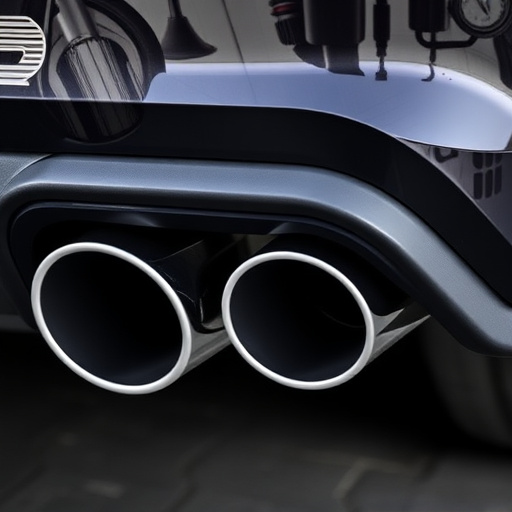Spotting Fake Catalytic Converter Replacement Parts: A Buyer’s Guide
Catalytic converters are vital for modern vehicles, filtering toxic exhaust gases into less harmful…….
In the relentless pursuit of cleaner and more sustainable transportation, the concept of catalytic converter replacement has emerged as a pivotal strategy. This article delves into the intricate world of this technological advancement, its global impact, and its role in shaping a greener future. Catalytic converters, essential components in automotive systems, play a critical role in reducing harmful emissions. The process of replacing these converters is not merely a technical task but a complex journey involving environmental, economic, and technological considerations. By exploring each aspect, we gain valuable insights into the significance and potential of catalytic converter replacement on a global scale.
Definition: Catalytic converter replacement refers to the process of installing a new catalytic converter in an automotive exhaust system to enhance its emission control capabilities. A catalytic converter is a device that facilitates chemical reactions, converting harmful gases into less toxic substances, thereby reducing pollutants emitted by vehicles.
Core Components and Function: The primary components include:
Historical Context: The concept of catalytic conversion dates back to the early 20th century when researchers sought ways to combat air pollution. However, it was in the 1970s that significant progress was made when automotive manufacturers started incorporating catalytic converters into their vehicles, primarily due to stringent emission standards being imposed worldwide.
Significance: This technology is vital for several reasons:
International Influence: Catalytic converter replacement has a profound global impact, with every region adopting it at varying rates. The demand is driven by factors like economic development, environmental policies, and the availability of advanced manufacturing capabilities.
Regional Disparities:
Trends Shaping the Future:
Market Overview: The global catalytic converter market is a multi-billion-dollar industry, with various factors influencing its growth:
| Factor | Impact |
|---|---|
| Vehicle Sales | Directly proportional to the demand for converters, as each vehicle requires at least one converter. |
| Emission Standards | Strict regulations drive market growth, especially in regions with stringent norms. |
| Economic Development | Higher GDP levels lead to increased vehicle ownership, boosting converter sales. |
| Government Incentives | Subsidies and tax benefits can stimulate the adoption of cleaner technologies, including catalytic converters. |
Investment Patterns:
Economic Impact:
Innovations in Catalytic Converter Technology:
Impact and Future Potential:
Key Policies and Frameworks:
Influence on Development:
Main Challenges:
Criticisms and Solutions:
Case Study 1: California’s Zero Emission Vehicle Program
California, USA, has been at the forefront of clean transportation initiatives. Its Zero Emission Vehicle (ZEV) program requires manufacturers to sell a certain percentage of zero-emission vehicles annually. This policy has led to widespread adoption of catalytic converters in electric and hybrid vehicles, significantly reducing emissions from the state’s fleet. The success lies in stringent regulations, consumer incentives, and manufacturer commitments, resulting in a cleaner and more sustainable transportation network.
Case Study 2: Japan’s Hybrid Vehicle Revolution
Japan’s successful integration of catalytic converters into hybrid vehicles is a remarkable story. The country’s strict emission standards and government subsidies encouraged manufacturers to invest in advanced converter technology. As a result, Japanese hybrids achieved exceptional fuel efficiency and low emissions, gaining global recognition. This case highlights the impact of supportive policies and innovative technologies on cleaner transportation.
Case Study 3: European Union’s Emission Standards
The EU’s comprehensive emission standards have been instrumental in driving catalytic converter replacement across the continent. By setting clear guidelines for converter performance, the EU has ensured that vehicles meet stringent pollution control requirements. This uniform approach has facilitated trade while maintaining high environmental standards, demonstrating the power of unified regulatory frameworks.
Emerging Trends:
Growth Areas:
Strategic Considerations:
Catalytic converter replacement is not merely a technical process but a catalyst for positive environmental and economic change. Its global impact is undeniable, with regions embracing this technology to combat air pollution and meet emission standards. The technological advancements in converters have led to cleaner, more efficient vehicles, contributing to sustainable transportation.
As the world navigates the challenges of climate change, catalytic converter replacement remains a vital strategy in the environmental sustainability arsenal. By addressing economic, policy, and technical considerations, we can unlock the full potential of this technology, ensuring a greener future for generations to come.
Q: How often should I replace my catalytic converter?
A: The frequency depends on various factors, including driving habits, vehicle condition, and regional emission standards. Regular maintenance checks can help determine if a replacement is necessary.
Q: Do catalytic converters affect fuel efficiency?
A: Modern catalysts are designed to optimize performance without significantly impacting fuel economy. In fact, they can improve efficiency by converting pollutants into less toxic substances, reducing backpressure in the exhaust system.
Q: Can I install a catalytic converter on my classic car?
A: It is possible, but it requires careful consideration and potential modifications. Classic car enthusiasts often face challenges due to availability and compatibility issues, but custom-engineered converters can be designed for specific models.
Q: How do I know if my vehicle needs a converter replacement?
A: Vehicles with failed emission tests or those emitting visible exhaust pollutants may require a converter replacement. Regular maintenance and inspection by certified technicians are essential to identify such issues early on.

Catalytic converters are vital for modern vehicles, filtering toxic exhaust gases into less harmful…….

Before attempting a catalytic converter replacement, DIYers must prioritize safety by wearing protec…….